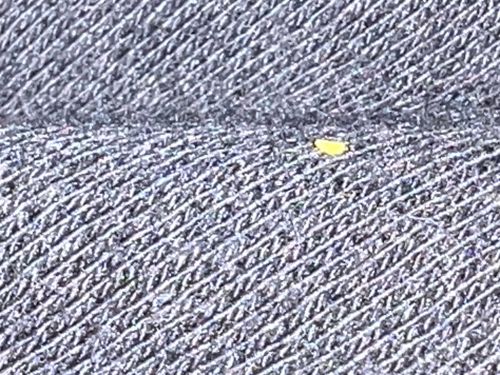Bird or rodent mite (likely nymph)
Scientific Name: Dermanyssus gallinae (chicken mite) or Ornithonyssus sylviarum (northern fowl mite) are common examples, but exact species cannot be determined from the image.
Order & Family: Order: Mesostigmata, Family: Dermanyssidae or Macronyssidae (depending on species)
Size: Typically 0.4 to 1.0 mm (nymphs are smaller, often translucent or pale yellow/white before feeding)

Natural Habitat
Nests and roosting areas of birds and rodents; can temporarily infest homes, especially near attics, chimneys, or areas where birds/rodents are nesting directly on or in a structure.
Diet & Feeding
Blood of birds and rodents. They are obligate hematophagous ectoparasites.
Behavior Patterns
Nocturnal feeders; they typically feed on their hosts at night and hide in cracks and crevices during the day. When their primary host (bird or rodent) leaves or dies, they may seek new hosts, sometimes entering human dwellings.
Risks & Benefits
Potential risks include irritating bites (causing itchy red welts), allergic reactions, and annoyance for humans. They do not typically live or reproduce on humans. They can cause anemia and stress in their animal hosts. No known benefits to humans or the ecosystem.
Identified on: 10/31/2025